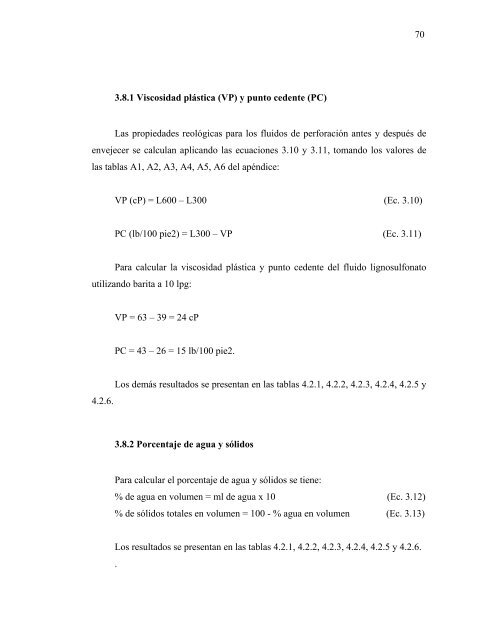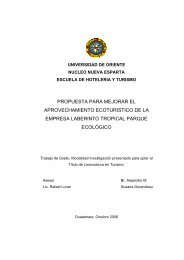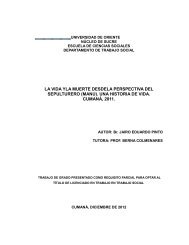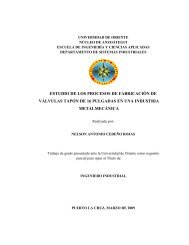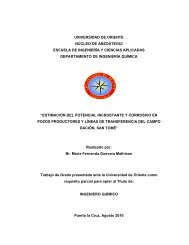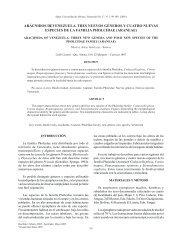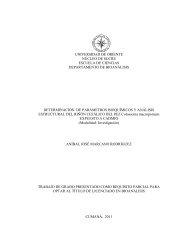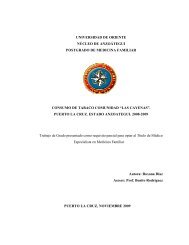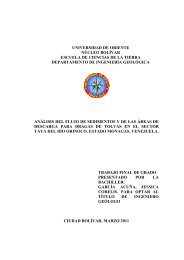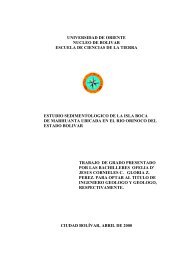UNIVERSIDAD DE ORIENTE - Ri.bib.udo.edu.ve - Universidad de ...
UNIVERSIDAD DE ORIENTE - Ri.bib.udo.edu.ve - Universidad de ...
UNIVERSIDAD DE ORIENTE - Ri.bib.udo.edu.ve - Universidad de ...
You also want an ePaper? Increase the reach of your titles
YUMPU automatically turns print PDFs into web optimized ePapers that Google loves.
3.8.1 Viscosidad plástica (VP) y punto ce<strong>de</strong>nte (PC)<br />
Las propieda<strong>de</strong>s reológicas para los fluidos <strong>de</strong> perforación antes y <strong>de</strong>spués <strong>de</strong><br />
en<strong>ve</strong>jecer se calculan aplicando las ecuaciones 3.10 y 3.11, tomando los valores <strong>de</strong><br />
las tablas A1, A2, A3, A4, A5, A6 <strong>de</strong>l apéndice:<br />
VP (cP) = L600 – L300 (Ec. 3.10)<br />
PC (lb/100 pie2) = L300 – VP (Ec. 3.11)<br />
Para calcular la viscosidad plástica y punto ce<strong>de</strong>nte <strong>de</strong>l fluido lignosulfonato<br />
utilizando barita a 10 lpg:<br />
4.2.6.<br />
VP = 63 – 39 = 24 cP<br />
PC = 43 – 26 = 15 lb/100 pie2.<br />
Los <strong>de</strong>más resultados se presentan en las tablas 4.2.1, 4.2.2, 4.2.3, 4.2.4, 4.2.5 y<br />
3.8.2 Porcentaje <strong>de</strong> agua y sólidos<br />
Para calcular el porcentaje <strong>de</strong> agua y sólidos se tiene:<br />
% <strong>de</strong> agua en volumen = ml <strong>de</strong> agua x 10 (Ec. 3.12)<br />
% <strong>de</strong> sólidos totales en volumen = 100 - % agua en volumen (Ec. 3.13)<br />
Los resultados se presentan en las tablas 4.2.1, 4.2.2, 4.2.3, 4.2.4, 4.2.5 y 4.2.6.<br />
.<br />
70


